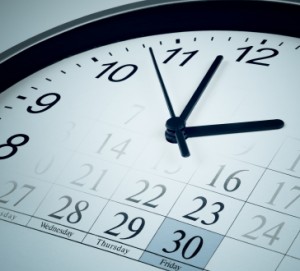Social Media: Timing Is Everything, Almost
 When using social media outlets to market your brand, do you focus on when you make posts or do you just post when it’s convenient for you? According to reports conducted by Buddy Media, timing of social media posts may matter more than we once thought. In separate reports, the group analyzed data collected from brand pages on Facebook and over 320 Twitter handles of the world’s biggest brands.
When using social media outlets to market your brand, do you focus on when you make posts or do you just post when it’s convenient for you? According to reports conducted by Buddy Media, timing of social media posts may matter more than we once thought. In separate reports, the group analyzed data collected from brand pages on Facebook and over 320 Twitter handles of the world’s biggest brands.
After Facebook made the switch to timeline for brand pages, Buddy Media collected data from brand pages for 2 months. The collected data was analyzed based on Like Rate, Comment Rate, Share Rate, and Interaction Rate. Like, Comment, and Share Rates were determined by the number of likes, shares, or comments divided by the number of impressions per post. Interaction Rate was determined by the number of likes plus comments plus shares divided by number of impressions. They used similar metrics to gather data in the report on effective tweets based on Twitter replies, retweets, and engagement.
Both reports showed higher interaction between brands and their audiences on Facebook and Twitter on the weekend, even though most brands make a majority of their posts during the week. On both outlets, certain industries had higher interaction rates on specific days of the week. Therefore, it’s important to review your updates and their responses to re-evaluate your strategy based on industry. However, they found that timing posts to engage the most users was different on Facebook and Twitter. Facebook users are more likely to interact between the hours of 8 p.m. and 7 a.m., while Twitter users are more engaged during the hours of 8 a.m. and 7 p.m. Luckily, Facebook recently added the ability to schedule posts, which makes it much easier to reach your target market and foster relationships after business hours.
Besides timing posts to better engage users, the reports users respond better to fewer Facebook posts as well as shorter posts. Brands on Facebook that posted 1 or 2 times per day had higher interaction rates than those that posted 3 or more times per day. Although the character limit on Twitter is 140, and there’s no limit on Facebook, Buddy Media’s report showed higher engagement for posts that were under 80 characters.
The fact that photo posts receive better interaction rates than other types of posts on Facebook is not new news. However, the fact that status updates containing only text receive higher interaction rates than Facebook posts with links or videos is not what some would assume. Conversely, Tweets containing links are more likely to be retweeted than those without links, but the report also showed that if you want this sort of interaction, just ask. Believe it or not, fans are more likely to “like” or retweet something if you ask them to, and the same goes for comments and sharing. Additionally, don’t be afraid to be expressive and use emoticons. Buddy Media’s report showed posts with emoticons had a 52% higher interaction rate than posts that don’t.
If you need help with your social media marketing strategy or marketing plan in general, contact us today. You can also connect with us on Facebook, Twitter, Pinterest, and Google+ for marketing and public relations news.
